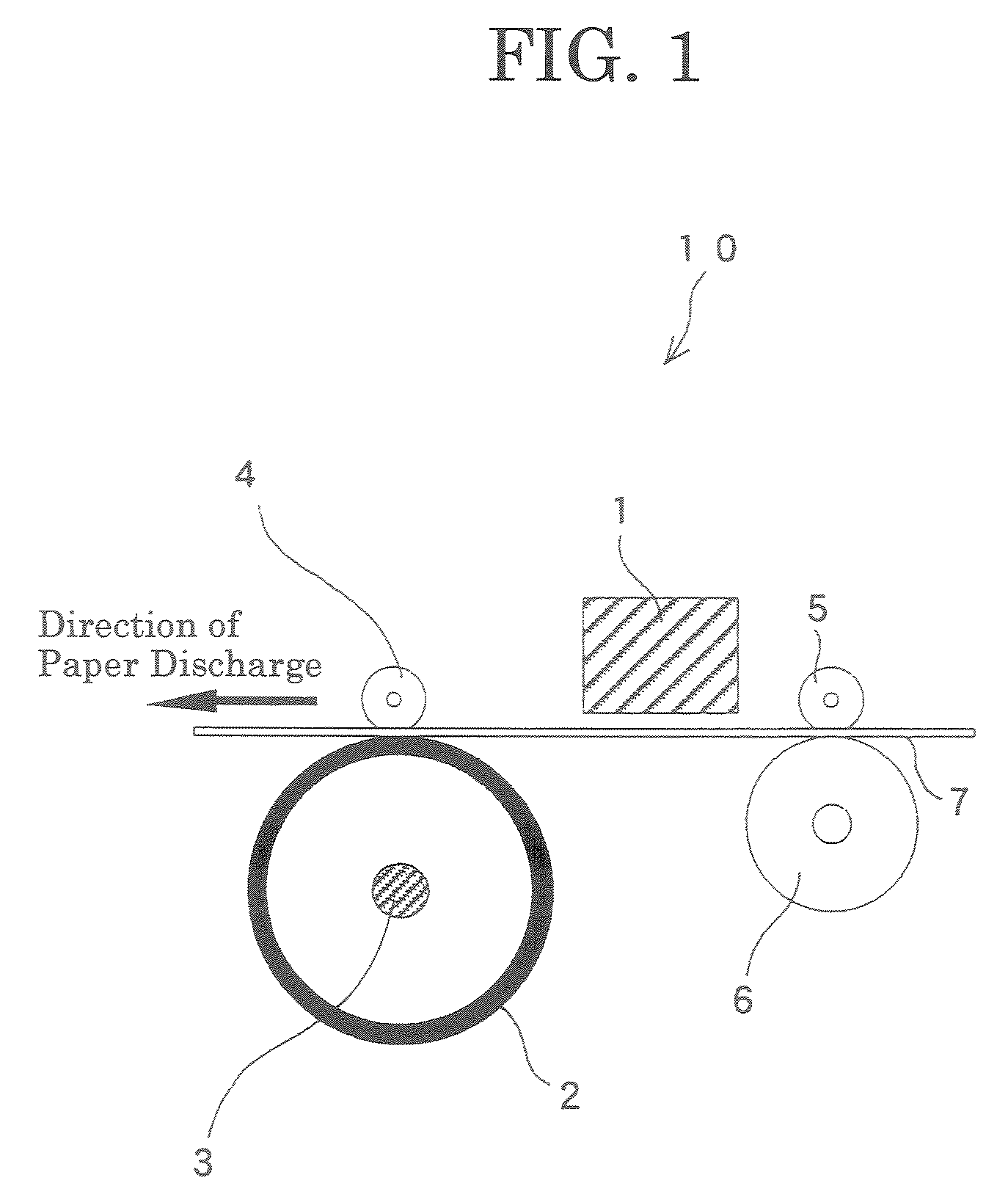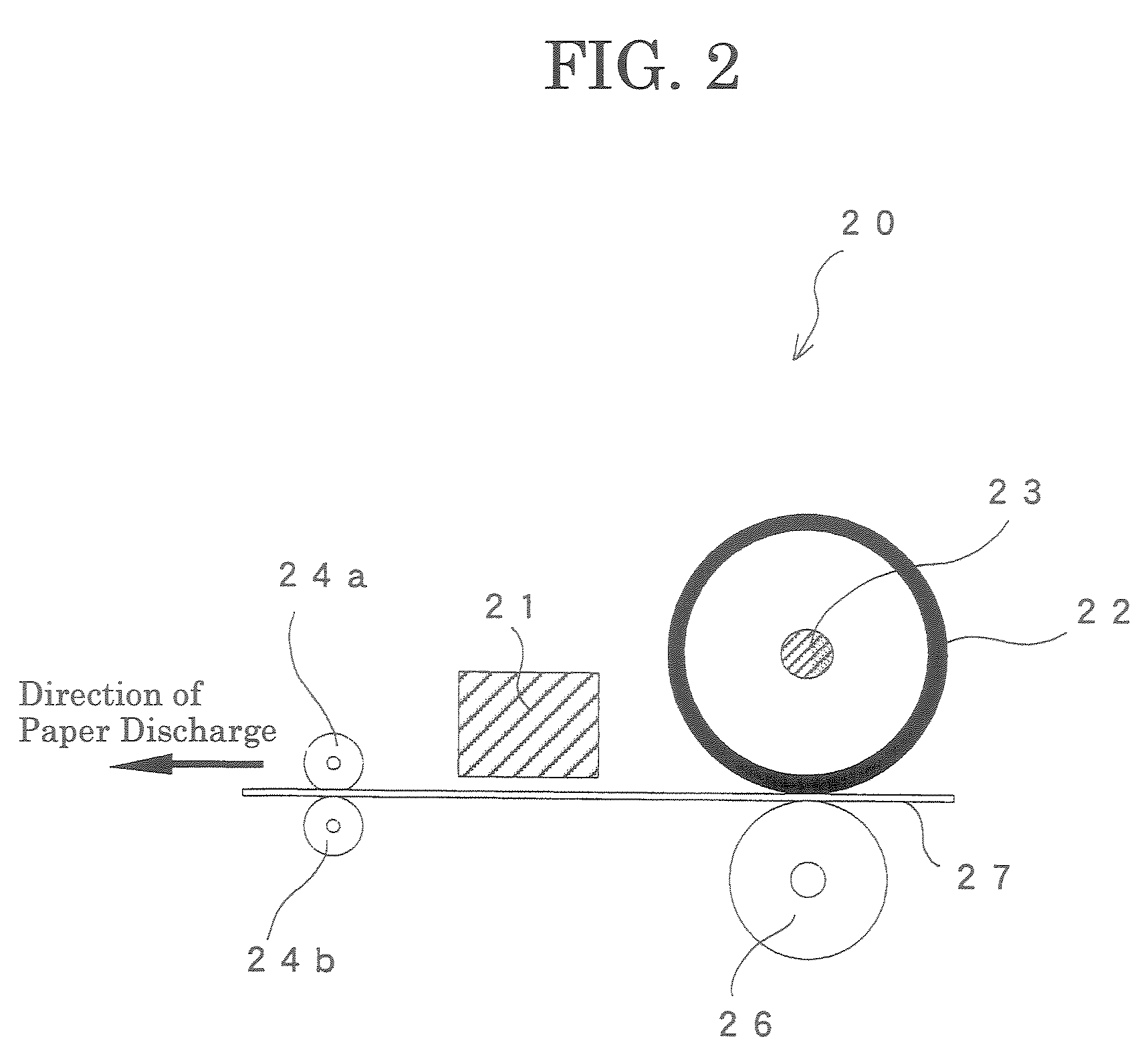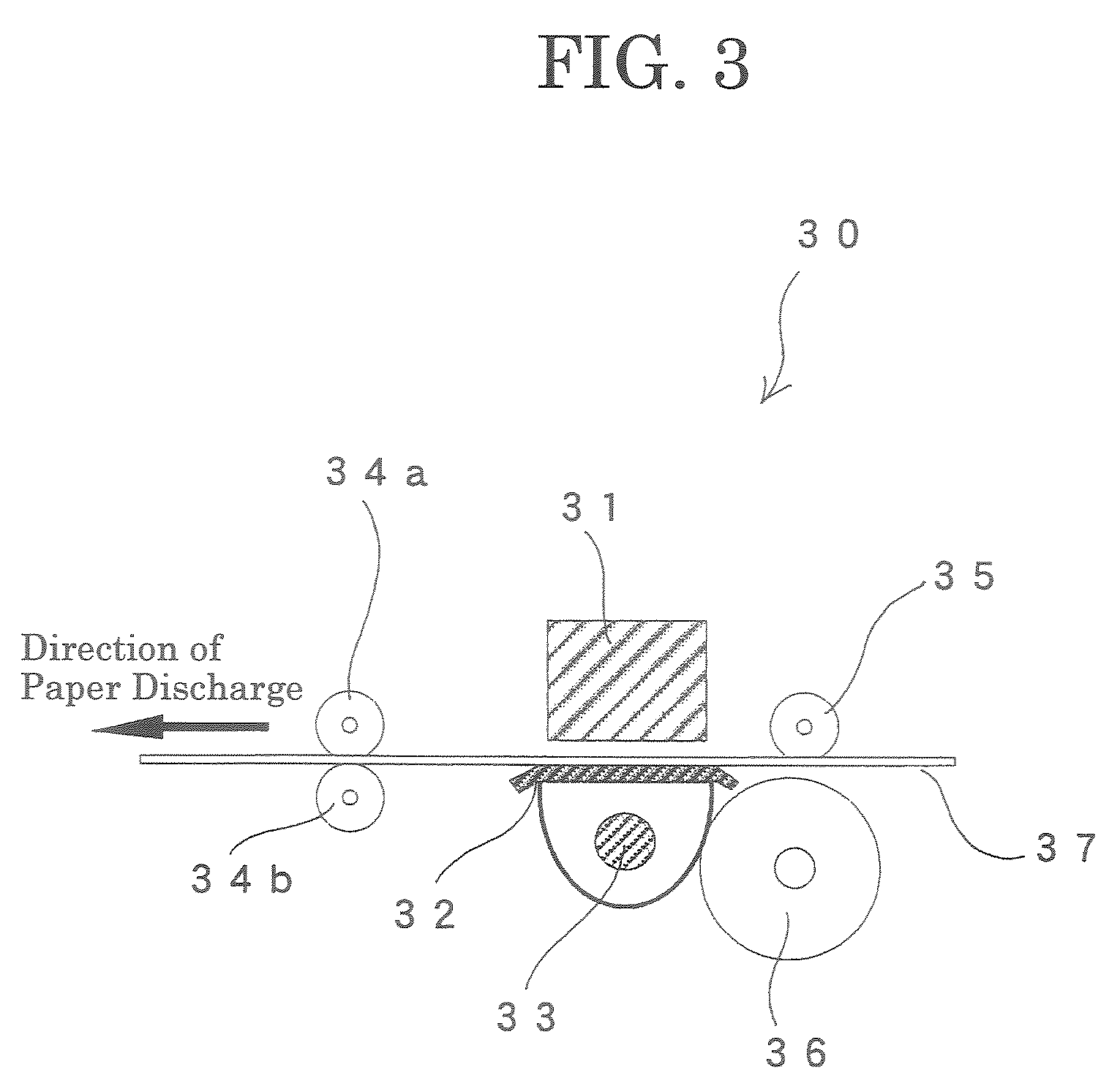Recording ink, inkjet recording method and inkjet recording apparatus using the same
- Summary
- Abstract
- Description
- Claims
- Application Information
AI Technical Summary
Benefits of technology
Problems solved by technology
Method used
Image
Examples
example 1
[0212]The composition and production method of the recording ink for the inkjet of Example 1 are shown as follows.
(1) Composition
[0213]
Pigment fine particles (trade name: CAB-O-JET 300;50.0% by mass by Cabot Co.; a carbon black subjected to a treatmentin which at least one of hydrophilic groups is bondedto the surface of the carbon black directly or throughanother group)Wetting agent (1,3-butylene glycol)23.3% by mass Wetting agent (glycerin)7.7% by massPenetrating agent (diethylene glycol monobutyl ether)2.0% by massSurfactant (trade name: Dinol 604; by Shin-Etsu1.0% by massChemical Industries Co., Ltd.)Deforming agent (trade name: silicone deformer KS0.1% by mass508; by Shin-Etsu Chemical Industries Co., Ltd.)Water (pure water)15.9% by mass
(2) Production Method
[0214]First, a wetting agent, a penetrating agent, a surfactant and water were mixed and the resultant mixture was stirred for 1 hour, thereby mixing uniformly the mixture. Next, to the mixture, a pigment and a deforming ag...
example 2
[0215]The recording ink of Example 2 was produced in substantially the same manner as in Example 1, except that the type and amount of the pigment fine particles, the amount of the wetting agent of 1,3-butylene glycol, the amount of the wetting agent of glycerin and the amount of pure water were changed to the dispersion of the polymer fine particle containing a pigment prepared in Comparative Example 2 and 45.0% by mass, 29.3% by mass 9.7% by mass and 12.9% by mass.
[0216]The compositions of the recording inks produced in Examples 1 and 2 are shown in Table 2.
[0217]
TABLE 2ComponentDescriptionExample 1Example 2PigmentCAB-O-JET300*150.0fine particlesAqueous45.0dispersionof polymer fineparticles*2Wetting1,3-butylene glycol23.329.3agentGlycerin7.79.7PenetratingDiethylene glycol2.02.0agentmonobutyl etherSurfactantDinol 604*41.01.0DeformingSilicone deformer0.10.1agentKS 508*5WaterPure water15.912.9Total (% by mass)100.0100.0PropertiesViscosity (mPa · s)7.887.93Particle diameter106.3119.6D...
example 3
[0226]The recording ink of Example 3 was produced in substantially the same manner as in Example 1, except that the composition of the recording ink was changed to the following composition.
[0227]
Pigment fine particles (trade name: CAB-O-JET 300;50.0% by mass by Cabot Co.; a carbon black subjected to a treatmentin which at least one of hydrophilic groups is bondedto the surface of the carbon black directly or throughanother group)Wetting agent (3-methyl-1,3-butylene glycol)21.0% by massWetting agent (glycerin)7.0% by massPenetrating agent (octanediol)2.0% by massSurfactant (trade name: FINESURF TDP-0107; by1.0% by massAoki Oil Industrial Co., Ltd.)Deforming agent (trade name: silicone KS 508; by0.1% by massShin-Etsu Chemical Industries Co., Ltd.)Water (pure water)18.9% by mass
PUM
| Property | Measurement | Unit |
|---|---|---|
| temperature | aaaaa | aaaaa |
| viscosity | aaaaa | aaaaa |
| pore diameter | aaaaa | aaaaa |
Abstract
Description
Claims
Application Information
 Login to View More
Login to View More - R&D
- Intellectual Property
- Life Sciences
- Materials
- Tech Scout
- Unparalleled Data Quality
- Higher Quality Content
- 60% Fewer Hallucinations
Browse by: Latest US Patents, China's latest patents, Technical Efficacy Thesaurus, Application Domain, Technology Topic, Popular Technical Reports.
© 2025 PatSnap. All rights reserved.Legal|Privacy policy|Modern Slavery Act Transparency Statement|Sitemap|About US| Contact US: help@patsnap.com



